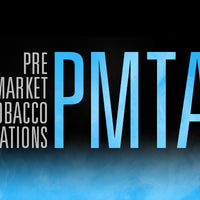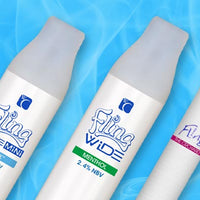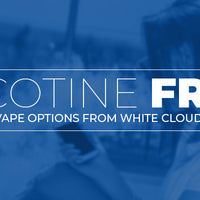In Parts 1 and 2, we took a look at the biggest news of the vaping industry from January to August of 2016. Now we’ll take a look at what happened during the remainder of the year.
A Review of the Vaping Industry in 2016: Part 3
The implementation of the FDA’s Deeming Regulations for vaping products didn’t serve as the only downer for 2016. A couple of states jumped on the overregulation bus with massive tax hikes, while a new surgeon general’s report condemned vaping.
Vape News from September 2016
In the wake of the FDA’s Deeming Regulations taking effect in August, and with proposed and/or passed state tax hikes for vapor products on the horizon, four vaping organizations joined forces to create a campaign to spread awareness about the potential health benefits of e-cigs. Created by the Smoke-Free Alternatives Trade Association (SFATA), Americans for Tax Reform, Consumer Advocates for Smoke-Free Alternatives Association (CASAA) and the American Vaping Association (AVA), the Right to Vape Campaign set out on a bus tour across 15 states to urge congress to make more sensible e-cig regulations.
With overwhelming support from the vaping community, the tour also received surprise visits from politicians in support of vaping. One such visit was from Senator Ron Johnson (R-Wis.), Chairman of the Senate Homeland Security and Governmental Affairs Committee, who is known for sending several letters to the FDA to determine whether or not the organization thought through any unintended consequences resulting from the deeming regulations.
For an inside look at the campaign, check out the Right to Vape Tour video series on YouTube.
Vape News from October 2016
October 1, 2016, marked another blow to the vaping industry in the state of Pennsylvania: the implementation of a 40 percent sales tax on all e-cig purchases. This includes all purchases made online and within Pennsylvania vape shops. Any attempt to avoid the 40 percent sales is punishable by a $5,000 fine and possible prison time – even possessing a vapor product sold outside of the state is illegal.
As if that wasn’t enough, the legislation also included a “floor tax” which required vape shop owners to pay a 40 percent tax on the wholesale value of their full inventory. As a result, the massive tax has forced more than 100 Pennsylvania vape shops out of business.
Vape News from November 2016
California has become well known for its anti-vaping campaigns and overregulation. From increasing the smoking/vaping age from 18 to 21 to proposing a ban on smoking and vaping in public parks and beaches, it was no surprise when Proposition 56 made its way to the ballot in November. The ballot measure called for an increase in cigarette tax from $0.87 to $2.00 per pack and included an “equivalent tax” for other tobacco products, including nicotine-containing vapor products.
Supporters of Prop. 56 argued that the measure was an attempt to prevent smoking-related deaths and illnesses and to reduce teen smoking, despite the fact that the smoking rate in California is one of the lowest in the country. On November 8, 2016, Prop. 56 passed by a 62.4% to 37.6% vote and is set to take effect on April 1, 2017.
Vape News from December 2016
The year ended in more vaping controversy with the release of the first U.S. Surgeon General’s report on e-cigarette use among youth, The surgeon general stated that the primary purpose of the report was to “detail the clear risks of e-cigarettes to youth and give parents, teachers and other adults guidance on how to prevent young people from using them”. The report states that vaping is now the leading form of tobacco use among the nation’s youth and goes on to state that the same strategies used to reduce youth smoking must also be applied to e-cigarettes, including higher excise taxes.
Despite the fact that both adult and youth smoking rates have hit an all-time low, the report claims there is still no evidence to support vaping as a proven method for smoking cessation. And, of course, the unproven “youth vaping leads to smoking” gateway theory reared its ugly head in the report, both on the list of “harms” in the comparative risk assessment and in the Foreword with the statement, “Nicotine is a highly addictive substance, and many of today’s youth who are using e-cigarettes could become tomorrow’s cigarette smokers.”
The report received an uproar of criticism from tobacco harm reduction experts, including Dr. Michael Siegel who labeled the report as being “scientifically dishonest”.
What’s to Come for the Vaping Industry in 2017?
Despite strict regulations, tax hikes and seemingly never-ending controversies, the vaping industry continues to move forward in 2017. In fact, lawmakers in support of vaping are continuing the fight against the FDA’s vaping regulations with the introduction of the FDA Deeming Authority Clarification Act of 2017 to “amend the Federal Food, Drug, and Cosmetic Act to provide for a certain effective date with respect to deemed tobacco products, to provide for the establishment of product standards for vapor product batteries, to provide for regulation of vapor products, and for other purposes.” In other words, the bill is intended to amend the FDA’s grandfather date and push for more sensible regulations for vapor products.






